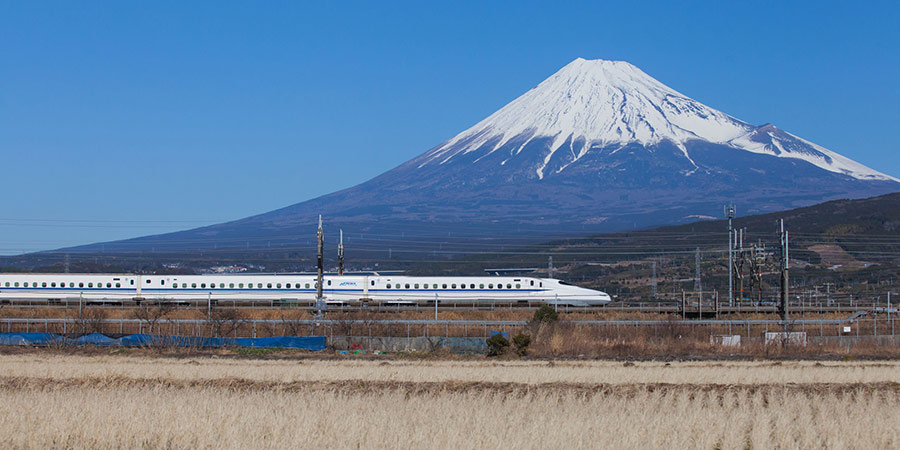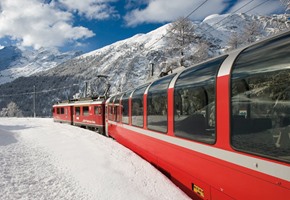Welcome to the future! Please leave your slow trains, your outdated tickets and your rackety old carriages at the door.
This is the fantastic new age of trains, roaring into space-age stations of a not-so-distant, gleaming-white, shimmering future. This is the age of high-speed vacuum trains, trains without drivers and fingerprint tickets. It is the age of multi-level stations with cinemas, restaurants and bold new architecture. It is the age where trains access places which were never thought possible, thanks to new technology and engineering breakthroughs. The future is bright, the future is on rails.
The Hyperloop
The most advanced hypothetical train in the world, the Hyperloop is the brainchild of one Elon Musk and his innovative company Space X.
Musk, a South African born entrepreneur who almost resembles a likeable real-life Bond villain, famously pioneered a private space exploration program, launching his first rocket early this year. Alongside his interstellar project, Musk is also working on an ultra-high-speed train service, tentatively named the Hyperloop.
The Hyperloop is the next step in rail technology. The key idea behind this futuristic train is the tunnel or tube in which the locomotive runs. One of the significant problems hindering high-speed rail travel today is that as the train becomes faster, so too do the air resistance and friction become far more substantial. To counter this, the Hyperloop's 'tube' is a sealed vacuum tunnel stretching out to the destination, with all of the air sucked out. With no air resistance or friction in the vacuum, the locomotive and carriages travel through the tube at exceptionally high speeds.
Musk's Hyperloop hopes to travel far faster than conventional high speed trains of today, such as the Shinkansen in Japan or the TGV in France. The initial idea saw a Hyperloop run from Los Angeles all the way to San Francisco, travelling at a distance of 760mph and covering an astonishing 350 miles in just over 35 minutes. Despite the space-age high speeds and the small environmental impact offered by the Hyperloop, perfecting the technology and stumping up the enormous cost mean that we won't be seeing this fantastic train anytime soon. Experts predict a cost of around $7.5 billion for the Los Angeles to San Francisco route, and critics have concerns about the safety of such a high-speed piece of rail engineering.
Fingerprints and eyeballs
I'm sure we've all had that dizzying, sickly feeling of delving into a pocket as the ticket collector comes around on the train only to discover that your rail ticket has disappeared from where you thought it was. Cue the frantic pocket patting dance as you search every possible place for that holy piece of paper. Whether you find it or not, that horrible first instance of pure panic is never a nice feeling.
Well, pocket pat no more, because biometric scanners may be coming to a railway near you! Biometrics is the process of analysing a part of your body, normally the fingerprint or iris, to determine your identity. One prediction of course, is that this technology may soon replace the paper and mobile tickets we have become so used to over the past century or so.
This process may take two forms. One sees either the eye or a fingerprint registered with a card to an account, and when that eye is scanned at a payment point, the card is authorised to buy the selected rail tickets. Alternatively, the tickets may well be bought online, and the finger print or eye signature may simply be used as identification.
Regardless of how it is implemented, biometric tickets have both their advocates and their critics. Those in favour promote the ease, convenience and environmental benefits. With your right and proof of passage as part of your body, there's no realistic chance of you misplacing a ticket meaning. Additionally, the retirement of paper tickets across the UK and perhaps the world would have an impact on the travel industry's carbon food print. On the flip side, there are those who may well see biometric scanners as just another way for scammers to steal identities, or for more sinister corporations to sell more of our information to even more clandestine organisations.
Newer and better stations
Stations are changing too. Many stations across the world are already thriving hubs of shopping areas, restaurants and cafés, bringing a range of entertainment options to those waiting for their trains. Iconic stations like London Paddington and Grand Central Station in New York City have already adopted a commercial outlook, and it looks as though many others will follow suit. Shinjuku Station in Tokyo features around eight malls and shopping centres and many others include cinemas, bars and even nightclubs.
Along with this, the architecture of stations has changed over the years. Many cities across the world place importance on attractive stations given their position as one of the first buildings that visitors see upon their arrival. Examples include the stunning Rotterdam Centraal Station with its sharp, angular building and the spectacular Kanazawa Station which combines classic and modern Japanese architectural styles.
Anything from the future we've missed? Let us know in the comments below!






